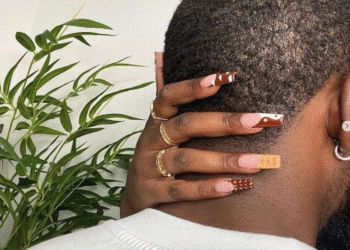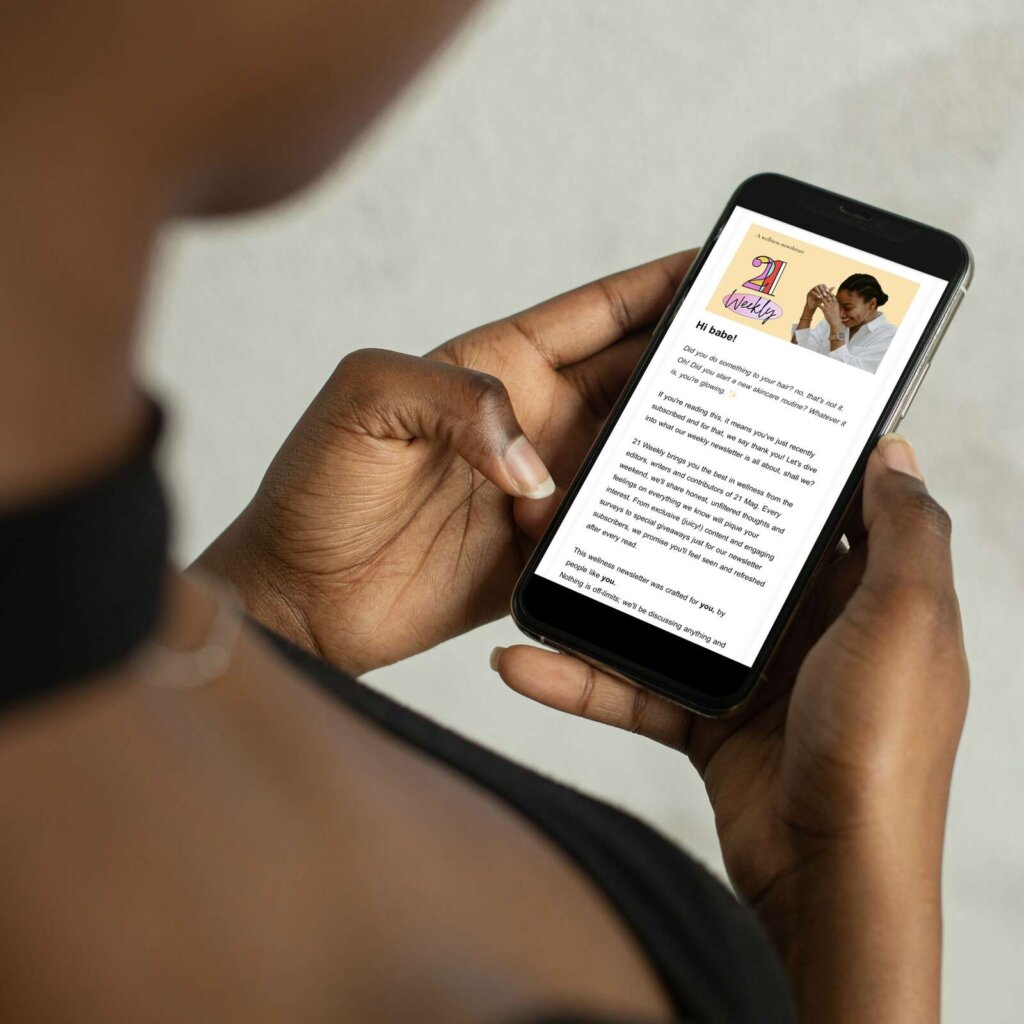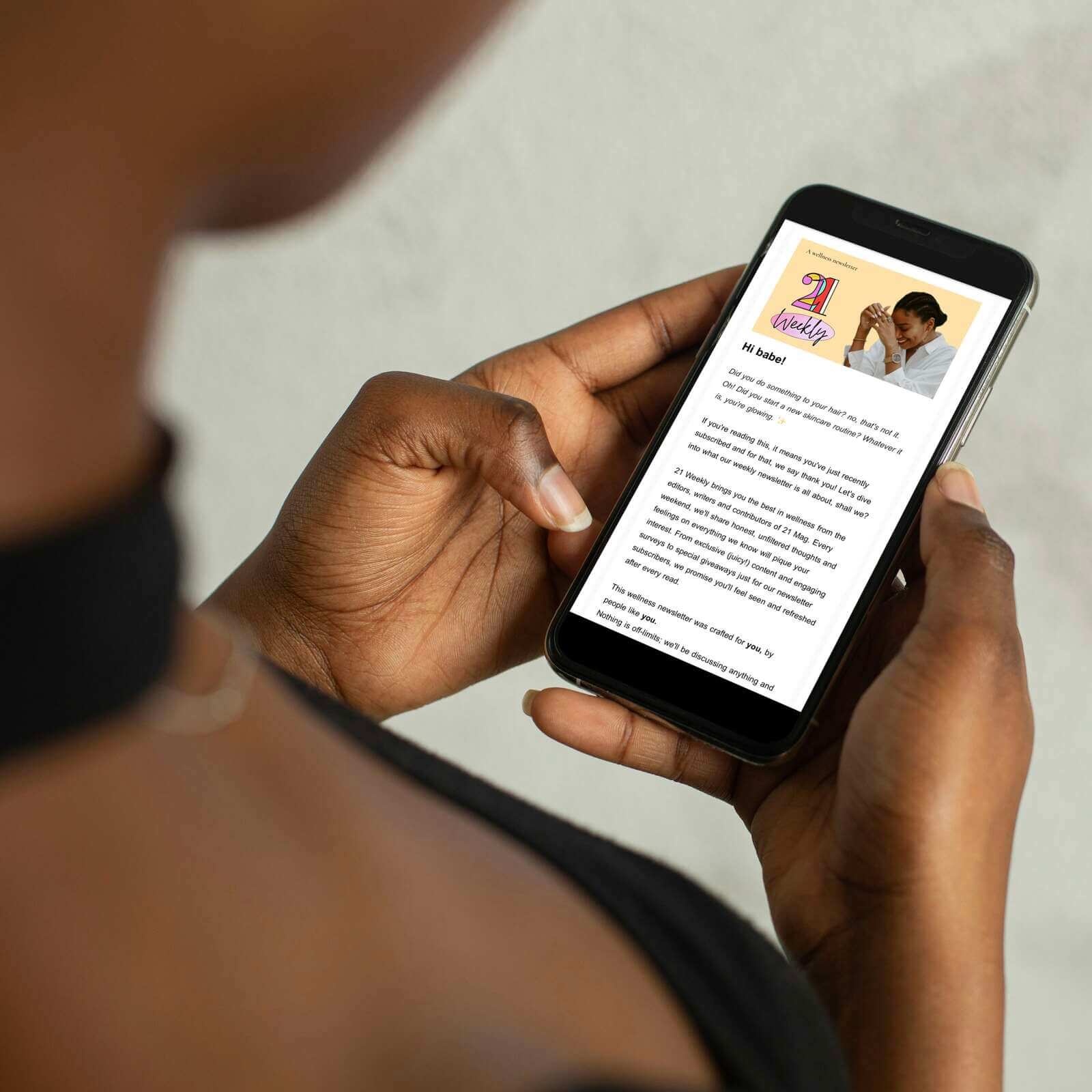
We spend minutes, even hours, analyzing, concealing, and curating the face we present to the world. We track our bodies not for their strength or function, but for their measurements, their smoothness, their social media-readiness. We lean in close to the mirror, and there’s an echo of thoughts: “do I have a new wrinkle?”, “is my butt big enough?”, “I should get my nails done”, “I should book that botox apointment”. “what can I use to shrink these ever present pores into oblivion”.
We are a generation fluent in the language of aesthetics. We know our hyaluronic acid from our retinol, the benefits of a jade roller, and the perfect angle for a selfie. Our definition of “wellness” has been masterfully rebranded into a visual ideal: a flat stomach in a matching activewear set, a radiant complexion (#nofilter, of course), a vibrant açai bowl artfully arranged for the ‘gram. We’ve been sold a beautiful lie: that if you look healthy, you are healthy.
But what if the reflection is a distraction? What if our relentless pursuit of “pretty” is the very thing keeping us from being truly well?
This October, as pink ribbons flood our feeds for Breast Cancer Awareness Month, it’s time for a difficult conversation. We need to talk about the insidious way that aesthetic pressure is preventing women from performing the most fundamental act of self-care: checking in with their own bodies.
The Illusion of Good Health
Society has successfully merged the concepts of beauty and health into a single, marketable package. Health is no longer about low cholesterol, normal blood pressure, or functioning organs. It’s about clear skin, a toned physique, and a glowing public persona. This illusion is dangerous because it’s a surface-level assessment.
A woman can have a perfect six-pack and be ignoring persistent, debilitating bloating that signals a G.I. issue. She can have the clearest skin of her life thanks to a rigorous 10-step routine, all while overlooking a mole on her back that has changed shape. The body we’re taught to obsess over is a silent, static object to be perfected. The body we actually live in, the one that feels, aches, changes, and sends us signals—is being ignored.
This obsession with appearance actively distracts us from looking deeper. Why? Because what we might find isn’t pretty. A lump, a strange discharge, an abnormal pap smear result—these things don’t fit into the curated, flawless narrative of modern womanhood. A diagnosis is not an aesthetic. It’s messy, it’s scary, and it forces a confrontation with a reality that a new serum or a Pilates class can’t fix.
When “Looking Good” Gets in the Way of Optimal Health

Think about it. We’re conditioned to endure discomfort for the sake of beauty. We pluck, we wax, we squeeze into shapewear, we wear heels that pinch. We’ve become experts at telling our bodies to shut up. Is it any wonder, then, that we’re so good at ignoring a different kind of discomfort—a persistent ache, a nagging fatigue, or a small, painless lump in a breast?
This is where the aesthetic pressure becomes life-threatening, particularly when it comes to breast health. We’re bombarded with images of how breasts should look: perky, symmetrical, unblemished. We invest in bras that lift and shape them, and lotions to smooth the skin around them. We get breast lifts, and implants. But the real work of breast health is tactile and clinical, not visual. It’s about knowing what’s normal for you.
A self-exam isn’t glamorous. It involves methodically feeling for changes that can be terrifying to find: lumps, thickened tissue, skin dimpling like an orange peel, a newly inverted nipple. Admitting that a part of your body feels ‘wrong’ feels scary and it feels safer to put off investigating deeper. “I’m too busy this week,” we tell ourselves. “It’s probably just a cyst.” “I’ll make a doctor’s appointment… later.”
This delay is a symptom of a deeper cultural sickness. We prioritize the urgent, visible “problems”—a breakout before a big event, a few extra pounds before a vacation, scanty brows—over the silent, potentially life-altering ones. We’ll spend an hour researching a vitamin C serum but won’t take five minutes in the shower to conduct a breast self-exam. We’ll schedule a bikini wax without a second thought but procrastinate for months on a pap smear. Why? Because the wax has an immediate, visible payoff. The pap smear is invisible, uncomfortable, and purely for our internal health.
Reframing What It Means To Care For Yourself As A Woman
It’s time to reframe self-care away from the version the beauty industry pushes. True self-care isn’t always a bubble bath or a face mask. Sometimes, it’s the opposite. It’s the courage to look at your body not as an object to be perfected, but as a complex, living organism that deserves your attention. It’s the discipline to schedule and keep your annual checkups, your mammograms, and your cervical screenings. It’s the bravery to perform a monthly self-exam and sit with the anxiety that might bring up, knowing that early detection is your greatest weapon. It’s listening when your body whispers, so you don’t have to wait until it screams. That whisper might be unusual fatigue, a change in your cycle, or a tiny lump that feels ‘off.’
Here’s your new self-care checklist. It might not be Instagrammable, but it’s the most pro-woman thing you can do for yourself:
- Schedule the ‘Scary’ Appointment: Is it the gynecologist? The dermatologist for a skin check? The doctor for that weird pain you’ve been ignoring? Book it. Right now.
- Learn Your Landscape: Your body is your own. Get to know the normal feel of your breasts, the typical rhythm of your cycle, the landscape of your skin. This is your baseline. Without it, you can’t notice a change.
- Talk About It: Normalize conversations about health issues with your friends. Swap stories about awkward G.I. symptoms or weird period pains, not just your favorite new foundation. Breaking the taboo makes it less scary for everyone.
- Curate Your Feed for Your Mind, Not Just Your Eyes: Unfollow accounts that exclusively equate wellness with a specific body type or perfect skin. Follow doctors, nurses, and health advocates who provide real, actionable information.
The next time you stand in front of that mirror, try a different kind of ritual. Acknowledge the woman looking back at you—not just her skin or her hair, but the incredible, intricate machine beneath it all. Place a hand over your heart, take a deep breath, and thank your body for all that it does. Then, promise it that you will do more than just make it look pretty. You will fight to keep it healthy.
Because true beauty isn’t about appearing flawless. It’s about being present, whole, and alive in the body you have and having the courage to take care of it, inside and out.







